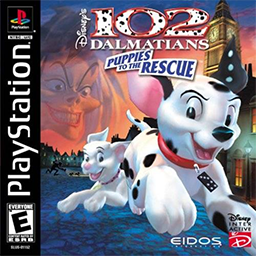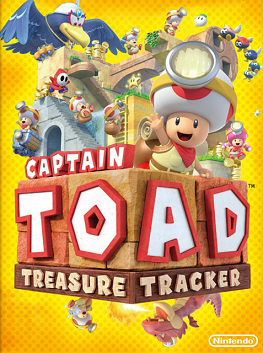
Koopa Troopas are a fictional turtle-like race of characters from the Mario media franchise. They are commonly referred to as Koopas, a more broad classification of creatures that includes Bowser, his Koopalings, and Lakitu. Predecessors to Koopa Troopas, Shellcreepers, first appeared in the 1983 game Mario Bros., while Koopa Troopas themselves debuted two years later in Super Mario Bros. (1985). Koopa Troopas are a common staple in most Super Mario and spin-off games. When defeated, they may flee from or retreat inside their shells, which can usually be used as weapons. Koopa shells are a recurring weapon in the franchise, particularly popularized in the Mario Kart series, in which they can be fired as projectiles against other racers. Despite making up the bulk of Bowser's army, Koopa Troopas are often shown to be peaceful, sometimes even teaming up with protagonist Mario.

Super Mario World 2: Yoshi's Island is a 1995 platform game developed and published by Nintendo for the Super Nintendo Entertainment System (SNES). The player controls Yoshi, a friendly dinosaur, on a quest to reunite baby Mario with his brother Luigi, who has been kidnapped by Kamek. Yoshi runs and jumps to reach the end of the level while solving puzzles and collecting items with Mario's help.

Balloon Fight is an action video game developed by Nintendo and HAL Laboratory and published by Nintendo for the Nintendo Entertainment System. It was originally released for arcades as VS. Balloon Fight, with the console version releasing in Japan in 1985 and internationally in 1986.

The Pokémon Mini is a handheld game console that was designed and manufactured by Nintendo in conjunction with The Pokémon Company and themed around the Pokémon media franchise. It is the smallest game system with interchangeable cartridges ever produced by Nintendo, weighing just under two and a half ounces. It was first released in North America on November 16, 2001, and was only available for purchase at the Pokémon Center and via its website. This was followed by releases in Japan on December 14, 2001, and in Europe on March 15, 2002. The system was released in three colors: Wooper Blue, Chikorita Green, and Smoochum Purple.

Harry Potter and the Philosopher's Stone is a 2001 video game developed by Argonaut Games and published by Electronic Arts for the PlayStation. Based on the 1997 novel of the same name, the player controls Harry Potter, who must navigate his first year in the Hogwarts School of Witchcraft and Wizardry and eventually confront the villainous Lord Voldemort. The game received mixed reviews, with critics saying that the game's license would be the only thing to draw in fans. The PlayStation version sold 8 million copies by May 2003, which would become Argonaut's best-selling game and one of the best-selling PlayStation video games of all time.

DK: King of Swing is a 2005 puzzle-platform game developed by Paon and published by Nintendo for the Game Boy Advance. King of Swing diverges from the gameplay of other games in the Donkey Kong series, instead featuring characters rotating around pegs to progress similar to the NES game Clu Clu Land. King of Swing has a single-player adventure mode, as well as a competitive multiplayer mode for up to four players. The game received mixed reception.

Super Mario is a platform game series created by Nintendo starring their mascot, Mario. It is the central series of the greater Mario franchise. At least one Super Mario game has been released for every major Nintendo video game console. However, there have also been a number of Super Mario video games released on non-Nintendo gaming platforms. There are more than 20 games in the series.

Disney's 102 Dalmatians: Puppies to the Rescue is a 2000 platform game developed by Crystal Dynamics and published by Eidos Interactive for Windows, PlayStation, Dreamcast and Game Boy Color. It is loosely based on the live-action Disney movie 102 Dalmatians.

Lego Batman: The Videogame is a 2008 action-adventure video game developed by Traveller's Tales and published by Warner Bros. Interactive Entertainment, released for the Xbox 360, PlayStation 3, PlayStation 2, PlayStation Portable, Wii, Nintendo DS, Microsoft Windows, and Mac OS X. The game is based on the DC Comics character Batman, as well as the eponymous LEGO Batman toyline.

Picross DS (ピクロスDS) is a puzzle video game developed by Jupiter and published by Nintendo for the Nintendo DS handheld video game console. It is the second Picross game to be released by Nintendo in Europe and North America after Mario's Picross suffered a commercial failure in regions outside Japan, where many Picross games have been released for several Nintendo consoles. Like other Picross games, it presents the player with a series of nonogram logic puzzles to solve. It was first released in Japan, and was later released in North America, Europe and Australia.

Mario vs. Donkey Kong: Minis March Again! is a 2009 puzzle-platform game developed by Nintendo Software Technology for the Nintendo DSi. The third game in the Mario vs. Donkey Kong series, it is a follow-up to Mario vs. Donkey Kong 2: March of the Minis. It is the first DSiWare game to feature a level editor in which players can create custom-made levels and send them to players on other devices via a wireless Internet connection.

Spore Hero Arena is a science fiction action-adventure game for the Nintendo DS and is a spin-off of Spore Hero which was released in North America on October 6, 2009, and worldwide on October 8. This game is the second Spore game for the Nintendo DS, and focuses more on battling than its predecessor, Spore Creatures. Creatures are now rendered in full 3D and the creature design system has been overhauled. The online functions/multiplayer were closed on 30 June 2014.

Mario vs. Donkey Kong: Mini-Land Mayhem! is a 2010 puzzle-platform game developed by Nintendo Software Technology for the Nintendo DS. The game was released in North America on November 14, 2010 and is the fourth entry in the Mario vs. Donkey Kong series.

The Penguins of Madagascar is a video game developed by Griptonite Games and released on Nintendo DS on November 2, 2010, with additional minigames utilizing the camera on Nintendo DSi systems. The game is based on DreamWorks and Nickelodeon's The Penguins of Madagascar animated television series, and is unrelated to DreamWorks' Penguins of Madagascar film. The game received a successor, The Penguins of Madagascar: Dr. Blowhole Returns – Again!, in September 2011 for most gaming platforms.
Mutant Night is an arcade platform shooter game released by UPL in 1987 and distributed by Kawakus for manufacture. The player controls a small white creature named Mutron-kun, who has a large eye that bubbles can be shot from, and which then kill the various and diverse enemies that attack, for example skeletal monkeys, space ships and spinning discs. Mutron-kun also has the ability to jump and remain floating for a period of time by the repeated pressing of the jump button.

Captain Toad: Treasure Tracker is a 2014 action puzzle video game developed and published by Nintendo for the Wii U. The game was re-released for the Nintendo Switch and Nintendo 3DS in 2018 with additional content. It is a spin-off of the Super Mario series and a part of the larger Mario franchise. The game stars Captain Toad and Toadette as they complete levels, defeat enemies and save each other from the antagonist Wingo. Each level is contained within a miniature diorama-like environment that requires puzzle-solving and platforming challenges to complete. The player also uses the Wii U GamePad to rotate the camera and reveal new information and interact with the environment.

Disney's The Lion King 1½ is a platform game based on the film of the same name, the third and final traditionally-animated film in The Lion King franchise. It was developed by Vicarious Visions and published by Disney Interactive, whilst THQ distributed the game in Europe. The game was released worldwide for Game Boy Advance on October 7, 2003 4 months before the film came out.

Lego Dimensions is a Lego-themed action-adventure platform crossover video game developed by Traveller's Tales and published by Warner Bros. Interactive Entertainment, for the PlayStation 4, PlayStation 3, Xbox One, Xbox 360, and Wii U. It follows the toys-to-life format, in that the player has Lego figures and a toy pad that can be played within the game itself where it features characters and environments from over 30 different franchises. The Starter Pack, containing the game, the USB toy pad, and three minifigures, was released in September 2015, while additional level packs and characters were released over the following two years.

Mini Mario & Friends: Amiibo Challenge is a 2016 puzzle-platform game developed and published by Nintendo for the Nintendo 3DS and Wii U. The seventh entry in the Mario vs. Donkey Kong series, the game was free to download on the Nintendo eShop, but requires Nintendo's Amiibo lineup in order to play. It was released in Japan in January 2016 and worldwide in April.

Croc is scrolling platform game for the Game Boy Color (GBC) developed by British studio Virtucraft and published on 6 June 2000 by THQ under license from Fox Interactive and Argonaut Software. It is a 2D remake of the 1997 3D platform game Croc: Legend of the Gobbos with similar gameplay. The game follows Croc, a crocodile, on a quest to save a race of furry creatures called Gobbos from the evil Baron Dante. The game received mixed reviews from critics. A second game for the GBC, Croc 2, was released in 2001, based on the 1999 game of the same title.


















